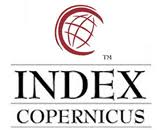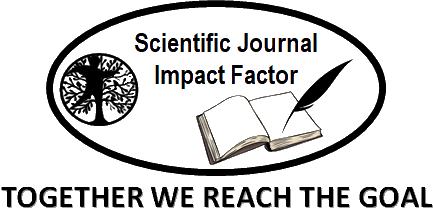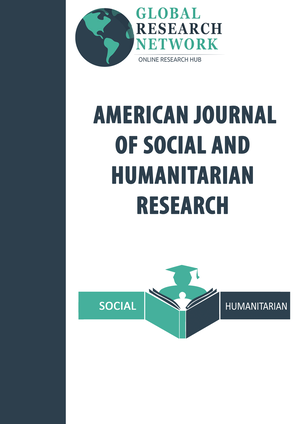Analysis of the Material on Direct and Inverse Proportions in Mathematics Teaching Materials for Seventh Grade Based on Praxeology
Abstract
This research aims to analyze school mathematics teaching materials from a practical perspective, where the researcher seeks to understand how students engage with the content presented in the teaching module. The concept of praxiology is a fundamental construct of the Anthropological Theory of Didactics (ATD). Teaching materials serve as empirical sources that can reveal the knowledge to be taught during didactic transposition. Through document study (in phenomenological design qualitative research) of the school mathematics teaching materials based on the Merdeka Curriculum, the results obtained are: (1) The task component in the material of direct and inverse proportions uses operational techniques and includes standalone tasks for students to complete; (2) The technique component is appropriate because the information presented in each session has continuity; (3) The technology component is not yet fully aligned, thus requiring improvements and enhancements in the development of information and communication technology-based learning media, and (4) The theory component aligns with a constructivist theory where students can build knowledge based on their individual experiences.
Keywords
Full Text:
PDFReferences
. Alase, Abayomi. 2017. The Interpretative Phenomenological Analysis (IPA): A Guide to a Good Qualitative Research Approach. International Journal of Education and Literacy Studies, Vol. 5 No. 2, April 2017. DOI: 10.7575/aiac.ijels.v.5n.2p.9
. Chevallard, Y. (2006). Steps towards a New Epistemology in Mathematics Education. In Proceedings of the 4th Conference of the European Society for Research in Mathematics Education (CERME 4) (pp. 21-30).
. Creswell, J. W. (2015). Educational Research: Planning, Conducting, and Evaluating Quantitative and Qualitative Research. Pearson.
. Fuadiah, N. F., Suryadi, D., & Turmudi. (2019). Teaching and Learning Activities in Classroom and Their Impact on Student Misunderstanding: A Case Study on Negative Integers. International Journal of Instruction, 12(1), 407-424. https://doi.org/10.29333/iji.2019.12127a
. Gauss, Carl Friedrich, (1801). Disquisitiones arithmeticae. New Haven. ISBN 978-0-300-19425-8. OCLC 951623297.
. Guez, A., Peyre, H., Le Cam, M., Gauvrit, N., & Ramus, F. (2018). Are high-IQ students more at risk of school failure? Intelligence, 71(October), 32-40. https://doi.org/10.1016/j.intell.2018.09.003
. Hakim, Thursan. (2005). Learning Effectively. Jakarta: Puspa Swara.
. Hidayah, M., & Forgasz, H. (2020). A Comparison of Mathematical Tasks Types used in Indonesian and Australian Textbooks based on Geometry Contents. Journal on Mathematics Education, 11(3), 385-404. https://doi.org/10.22342/JME.11.3.11754.385-404
. Hong, D. S., & Choi, K. M. (2018). A Comparative Analysis of Linear Functions in Korean and American Standards-based Secondary Textbooks. International Journal of Mathematical Education in Science and Technology, 49(7), 1025-1051. https://doi.org/10.1080/0020739X.2018.1440327
. Khasanah, U., Rahayu, R., & Ristiyani. (2021). Analysis of Mathematical Problem Solving Ability of Grade IV Students on Flat Buildings Based on Polya's Theory. Jurnal Didaktika, 1(2), 230-242. https://doi.org/10.17509/didaktika.v1i2.36538.
. Lawana, B. (2022). Analysis of Students' Ability to Solve Story Problems on Comparative Materials of Equivalent and Inverse Value in Class VIII of SMP Swasta Kristen Bnkp Mazino for the 2021/2022 Learning Year. FAGURU: Scientific Journal of Teacher Training Students, 1 (1).
. Liberna, H. (2018). The Relationship of Visual Learning Style and Self Anxiety to Understanding Mathematics Concepts of Class X Students of SMK Negeri 41 Jakarta. JNPM (National Journal of Mathematics Education), 2(1), 98-108.
. Putra, Z. H., Witri, G., & Sari, I. K. (2020). Elementary School Teacher Candidates' Didactic Knowledge of Fractions in View of the Didactic Anthropology Theory. Journal of Elements, 6(2), 244-261. https://doi.org/10.29408/jel.v6i2.2056.
. Shield, M. J., & Dole, S. (2002). Investigating Textbook Presentations of Ratio and Proportion. In Mathematics Education Research Group of Australasia.
. Sianturi, I. A. J., Ismail, Z., & Yang, D. C. (2021). A cross-national comparison of mathematical problems on numbers and operations-related topics in five countries. School Science and Mathematics, 121(2), 72- 84. https://doi.org/10.1111/ssm.12451
. Takeuchi, H., & Shinno, Y. (2020). Comparing the Lower Secondary Textbooks of Japan and England: A Praxeological Analysis of Symmetry and Transformations in Geometry. International Journal of Science and Mathematics Education, 18(4), 791-810. https://doi.org/10.1007/s10763-019-09982-3
. Tumay, H. (2016). Reconsidering Learning Difficulties and Misconceptions in Chemistry: Emergence in Chemistry and Its Implications for Chemical Education. Chemistry Education Research and Practice, 17(2), 229-245. https://doi.org/10.1039/c6rp 00008h
. Tusyana, E., & Luciana, D. (2019). The Effect of Numbered Heads Together Cooperative Learning Model on Citizenship Education Learning Outcomes. APPLIED: Journal of Basic Education and Learning, 6(2), 173-184. https://doi.org/10.24042/terampil.v6i2.4812.
DOI: http://dx.doi.org/10.52155/ijpsat.v46.2.6566
Refbacks
- There are currently no refbacks.
Copyright (c) 2024 Laila fitriana

This work is licensed under a Creative Commons Attribution 4.0 International License.



















